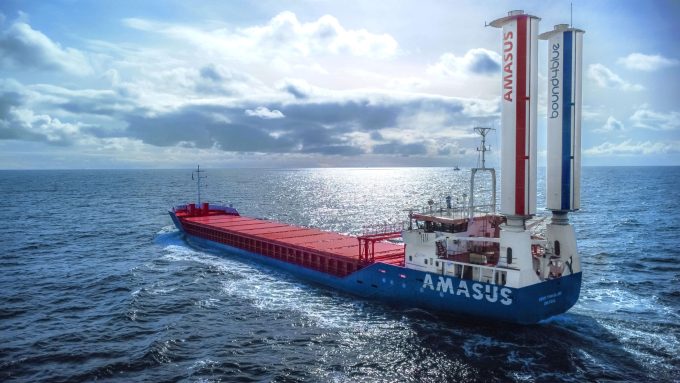Ever thought about the tariff grief cycle?
Let’s look, and don’t forget the green (net-zero 2050) angle…

Bound4blue has announced another sail installation on a shortsea vessel, as car carriers and general cargo vessels also prepare for a new age of sail.
But containerships remain the odd one out, missing out on huge fuel savings at time when they are sorely needed to ...

Comment on this article